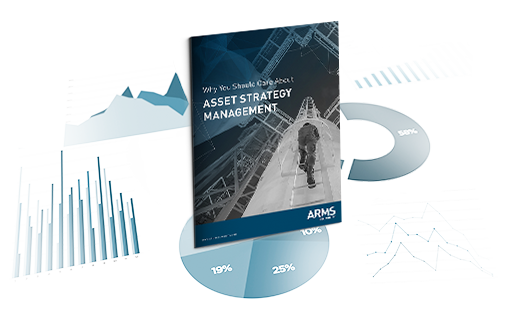Root Cause Analysis (RCA) and Asset Strategy Management (ASM) are two separate processes that when combined, can have a major positive impact on asset performance.
RCA is a strategy we use once a problem has occurred – it helps us to identify cause and effect relationships, and then enables us to arrive at a solution to prevent recurrence of that problem. ASM, on the other hand, is a process designed to manage asset reliability strategies over time to ensure that they are continually aligned to the operational environment and the performance goals for the assets.
ASM is a continuous process; RCA is typically retrospective. Yet the two can work together to improve overall performance of assets.
Here’s why:
- RCA solutions often translate into reliability strategy changes, yet if they are implemented without rigorous analysis there are risks of failure or increased cost of over-maintenance
- While RCAs are typically conducted on a specific problem involving specific assets, the solutions are often applicable to all instances of the same or similar assets
Let’s look at the above scenarios in more detail.
When RCA leads to changes in reliability strategy
In many instances, outcomes from an RCA are automatically added to the reliability strategy. Yet what happens if there is no real rigor in terms of assessing the effectiveness of the proposed change to the reliability strategy?
For example, say an RCA outcome is to “include a monthly inspection” or “adjust the 2-weekly inspection to 1 week”. The outcome is generated in isolation from detailed strategy review and goes straight to an action that’s implemented. The planner is tasked with updating Master Data within the EAM system – in doing this, they change the reliability strategy.
The problem is the lack of structure around assessing the actual impact of the proposed strategy change. How do you know if it will be effective? Will it achieve the desired outcome of your RCA team? Without a rigorous assessment of RCA-generated strategy changes, assets could be at greater risk of failure or the organization could face increased costs due to over-maintaining assets.
It’s common, post-RCA, for tasks to be added to a maintenance plan – even though these tasks are not effective or justified when considering the holistic reliability strategy.
These problems can be avoided if RCA is integrated into the ASM process. Any recommended change to the reliability strategy would follow the same workflow and include a review, justification and approval process. It would follow the organization’s agreed strategy review process and would be assessed in line with the entire asset reliability strategy.
It ensures that all reliability strategy changes are sound, have a structured implementation path and can be continually managed over time to ensure they are effective. It brings the value of RCA into ASM, and vice versa.
When RCA solutions are applicable to similar assets
Since an RCA is typically conducted on a specific event, it covers very specific assets. Yet what happens when you have several installations of that asset type across the site, or like assets spread across multiple sites around the globe?
It is a constant challenge for organizations to leverage solutions generated from RCA and implement them wherever applicable. For example, if an RCA outcome is to increase an inspection interval, it is typically manageable to implement that update for the specific assets involved. It gets much harder to apply a change to all other relevant assets, particularly across multiple sites.
An easy fix to this challenge is to integrate RCA into the ASM process. This way, through the connected digital dataset, the system knows where every instance of a similar asset is located. Those assets would have different “owners” who manage reliability strategy. Each owner would be notified of a recommended change to their reliability strategy, which they could then assess for their specific assets. If they justify and approve the change, the standard implementation path could be followed.
So, for example, if an inspection interval is changed, we would attach the RCA to both the specific asset and the asset type. The change can then flow through to all other installations of that asset type. The reliability strategy owners get automatic notification, can review the recommendation, and select to implement if relevant.
It significantly boosts productivity in the continuous improvement process by ensuring all good ideas are leveraged across an entire asset base, efficiently, via an automatic workflow.
What does good look like?
When RCA is integrated into ASM, you gain a 360-degree view of assets within your organization.
You can expand your approach to improving performance to direct reliability strategy related review and management. Any problems that do occur can be addressed effectively and efficiently, following a structured assessment, review and approval process – with solutions leveraged across the entire organization.


